-
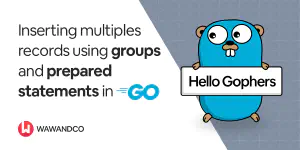
Batch Insert - Go database/sql
We may have come across the need of having to create multiple records in a single operation. Now, this can be achieved through a single insert command of course, but the more records we require to persist the longer it’ll take for this entire operation to complete. Let’s set up a basic example to go over this topic. We will be creating a list of contacts in bulk using the database/sql library in Go.Read more -
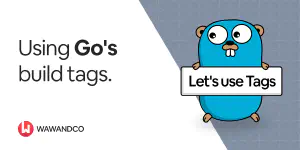
Using Go's build tags
In Go, a build tag is an indicator that is added to a piece of our code, to indicate when a package will be included in the building process. This gives us the possibility to compile different versions or parts of our application from Go, switch between them in a fast and organized way, and all from the same source code.By using the build tags we can work on integration tests in development teams, which allows us to test the updates of our code without the need to make modifications to the already tested sections of it.Read more -

Running Buffalo on CloudRun
You might have read an article I wrote before on how to run your buffalo container on CloudRun, however a lot has changed in CloudRun since I wrote that article and I noticed that I missed important details that will be needed to run your application there. In this article I will cover how to run your buffalo application in CloudRun (GA now). Overview of the Application I think is important to describe a bit of the app we’re deploying in order to understand what we’re trying to accomplish.Read more -
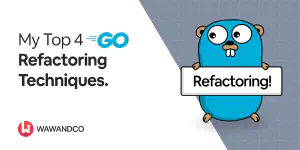
My top 4 refactoring techniques in Go
Martin Fowler in his book defines refactoring as “a change made to the internal structure of software to make it easier to understand and cheaper to modify without changing its observable behavior”. This book contains a long list of refactorings techniques that mean to be applied under certain scenarios and with the intention to eliminate “code smells”. Refactorings are a very extense topic and I’ve found them to have an important role in the software development process.Read more -

Go's Locations & Alpine Docker image
My team has faced an issue with timezones repeated times: Apparently, default Locations were not present in our production deployments of our apps, that took us by surprise given locally these were present and working nicely 🤔. This is an issue I’ve faced before. Every time I wanted to show dates in a certain timezone but such timezone was not present in our production environment, Our app ended up in GMT for everything, or we had to create our own locations.Read more -

Testing Buffalo Applications
Buffalo is a great tool to rapidly ship software solutions to the market, inspired by the famous Ruby on Rails framework, it brought Rapid Application Development to the Go Language. I say Buffalo, by far provides the best developer experience among other web development frameworks in Go, but I’m obviously biased by being part of the Buffalo core team. Buffalo’s existence has lead my team at Wawandco to deliver great apps within the last 2 years, and we are still delivering.Read more -
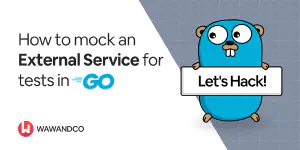
How to mock an external service for tests in GO
Read moreFrom my experience as a software developer, an issue that I have dealt when building an application are the dependencies for external services. A test with external dependencies where you don’t have much control can fail if there is a change in the service and the outcome is not the expected, with this in mind, we need to ensure the non-dependence of external services when running our tests. The most effective way to do this is mocking those dependencies.
In this post, I will focus on the functional tests of an application. I will also talk about how to mock an external service to not rely on it when running our functional tests.
To explain how to mock an external service, I’ll walk you step by step through an example.
Let’s say that we have an endpoint, that is using a third-party package called holidays that is making HTTP requests to an external service to get such holidays.
-
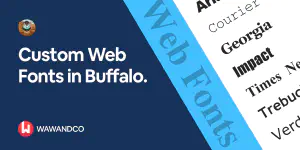
Custom Web Fonts in Buffalo
Read moreIn certain situations the site or app you’re building uses fonts that are not hosted in a CDN. The font is not in Google fonts, and is not in Adobe Fonts or other provider.
You may be given at that point a set of OTF, TTF and WOFF files. But what do do then? How do you integrate those font files in your Buffalo app?. After all, you want your frontend to look as closer to what your designer has put together, And we all know that fonts matter.
What to do?
Assuming you are in your Buffalo app folder, take a look at the
assetssub-folder.- assets > css > images > js -
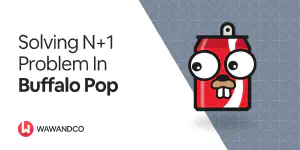
How Emergent Design Solved N+1 Problem In Buffalo Pop
Read moreDisclaimer. Those who are not familiarized with N+1 problem, you can check “What is the N+1 selects problem in ORM(Object-Relational Mapping) with details explaining the concept.
Since associations were introduced in Pop, the N+1 problem became part of it: many queries hit the database in order to load whole model’s associations. Good news is N+1 problem is not a disease without remedy. In this post I will give you some steps I took to solve it by incorporating emergent design.
Step 1: Start Coding By Example
Coding by example helps you to define what’s your input and what’s your output. Code By Example means you define a scenario where your solution is tested and what is the expected result. The method I used to apply this technique was Test Driven Development (TDD).